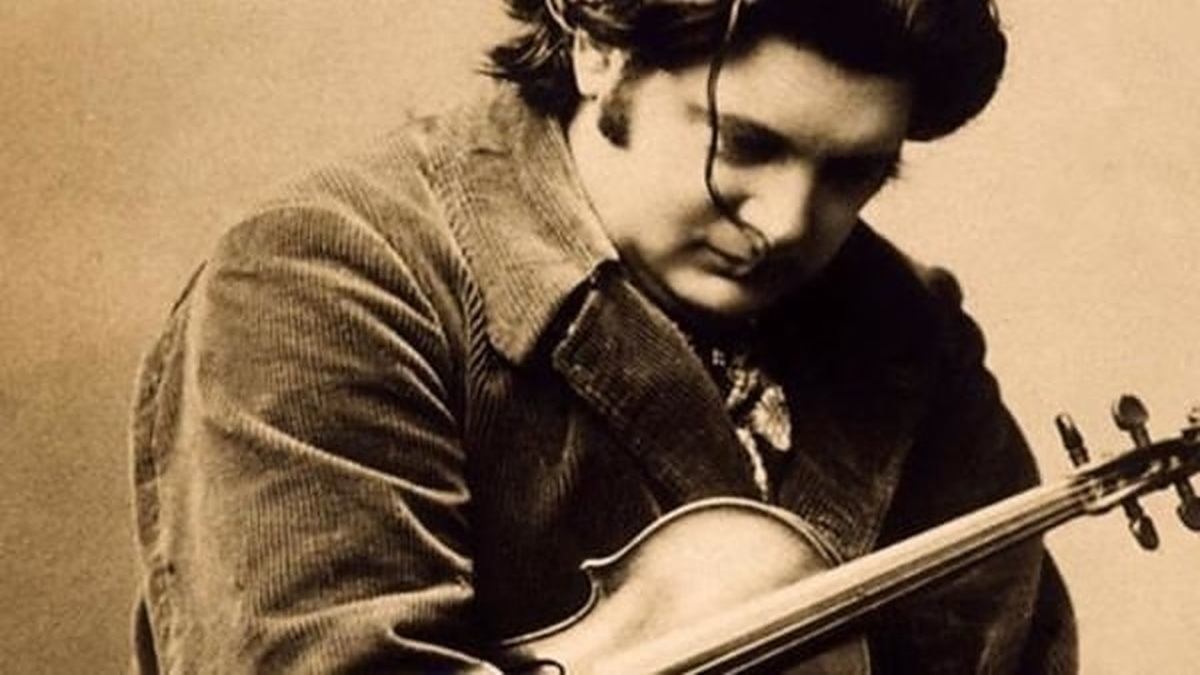When performing, the great Belgian violinist, Eugène Ysaÿe (1858-1931), strove for “emotion, poetry, heart.”
Called “the king of the violin,” Ysaÿe’s brilliant technique set a new standard. The conductor, Sir Henry Wood, described his tone as “ravishingly beautiful,” and noted that Ysaÿe “seemed to get more colour out of a violin than any of his contemporaries.” Among the over 200 works written for Ysaÿe are Ernest Chausson’s Poème and César Franck’s Violin Sonata in A Major, which was presented to the violinist as a wedding gift.
As a composer, Eugène Ysaÿe left an equally important mark. Most notable are his Six Sonatas for solo violin, composed in July of 1923. Following the model of J.S. Bach, they unleash dazzling contrapuntal lines which push the technical boundaries of the instrument. At the same time, Ysaÿe insisted that the performer “must be a violinist, a thinker, a poet, a human being, he must have known hope, love, passion and despair, he must have run the gamut of the emotions in order to express them all in his playing.” Ysaÿe dedicated each Sonata to one of his fellow contemporary violinists.
Sonata No. 3 in D minor, subtitled “Ballade,” was dedicated to the Romanian violinist and composer, George Enescu. It unfolds in a single movement, divided into two sections. The introduction (Lento molto sostenuto) is a passionate soliloquy which resembles a recitative. It is filled with falling half steps which suggest lamenting sighs and intimations of the whole tone scale. The Allegro in tempo giusto e con bravura which follows is set in 3/8 time, with spirited dotted rhythms, double and triple stops, and nervous leaps in register. Throughout the piece, there is a sense of gradually building tension, all of which is released in the virtuosic fireworks of the coda.
Here is a spectacular live performance by Augustin Hadelich:
Recordings
- Ysaÿe: Sonata for Solo Violin in D minor ‘Ballade’, Op. 27, No. 3, Augustin Hadelich Amazon
Featured Image: violinist Eugène Ysaÿe


Mr. Judd – What a superb performance–surely the highlight of my day! Thanks for sharing it.
Absolutely breathtaking playing from Mr. Hadelich. What incredible talent he has. Thank you, Mr. Judd.
Ysaÿe was blessed in the quality of the compositions written for and dedicated to him. One that you may not know is the 1907 Épithalame Op.32 for three violins and piano written by the brilliant Belgian composer Joseph Jongen. That work later became the Épithalame et Scherzo for three violins and orchestra. The backstory I learned at the time I was performing it is that the two were friends and Jongen wrote the piece as a gift for Ysaÿe’s daughter’s wedding. Ysaÿe liked so much that he asked Jongen to expand it into a concerto. The composer assented but years went by and nothing appeared. However, Ysaÿe would badger Jongen about it and finally in 1916 a substantial second movement appeared and the piece assumed its final form. It is a wonderful piece. It should be noted that Jongen also wrote a Violin Concerto for Ysaÿe that is so good that it should be mentioned whenever the topic of works dedicated to him is discussed. Thanks for the interesting post and the fabulous Hadelich performance. You can find the Violin Concerto on YouTube but there is no commercial recording of the Épithalame. If you’re interested, I’ll point you to a performance.
Hello, Mr. Williams –
Yes, please–I’d love to hear Épithalame! Also, would you recommend any particular recordings of Jongen’s Violin Concerto?
Thanks!